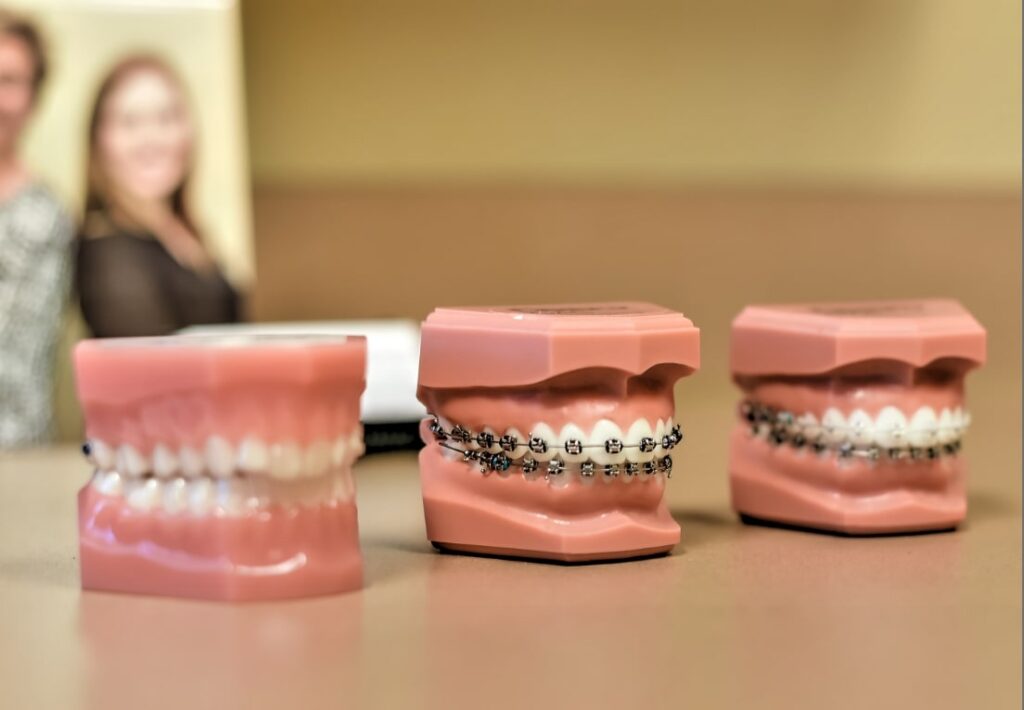Comprehensive Guide to Orthodontics Procedures for Correcting Oral Imbalances
In the realm of orthodontics, the journey to attaining a completely straightened smile involves a myriad of treatments customized to fix oral imbalances. From conventional dental braces to invisible aligners and also medical options, the field of orthodontics supplies a series of options to address varying levels of oral irregularities. Comprehending the intricacies of each procedure, including their devices, benefits, and prospective downsides, is important in making educated decisions regarding one's orthodontic therapy. As we browse via the comprehensive overview to orthodontic treatments for correcting dental misalignments, the complex information of each method will certainly unravel, clarifying the path toward a unified and useful oral alignment.
Orthodontic Procedures Summary

Along with clear aligners and conventional braces, orthodontists might likewise recommend other interventions like headwear, palatal expanders, or retainers to attend to certain positioning problems (cumming orthodontist). These treatments are tailored to every individual's distinct requirements and may entail a combination of therapies to accomplish the wanted results. Normal modifications and monitoring are vital parts of orthodontic therapy to guarantee progression is on track and to make any kind of necessary alterations in the process. By undergoing orthodontic treatments, clients can not just attain a straighter grin however additionally improve their general dental health and feature.
Traditional Braces: How They Function
When taking into consideration orthodontic therapies for oral misalignments, typical dental braces stand out as a tried and true technique for correcting teeth placing. Conventional braces are composed of braces, cables, and bands that work with each other to use constant pressure on the teeth, progressively relocating them right into the desired placement.
One secret aspect of how typical dental braces job is the procedure of bone renovation. As pressure is used to the teeth through the braces, the bone bordering the teeth is reshaped to support the brand-new tooth settings. This makeover is essential for the long-lasting security of the corrected positioning. People will require normal adjustments at the orthodontist's office to make certain the braces continue to use the correct pressure for efficient teeth activity.
Unseen Aligners: Advantages And Disadvantages
These clear, personalized trays are practically undetectable when used, making them an attractive choice for individuals seeking a more aesthetically pleasing orthodontic therapy. Individuals can eliminate the aligners before eating or cleaning their teeth, lowering the danger of food obtaining stuck in the home appliance and simplifying the cleansing process.

Surgical Orthodontic Options
Surgical treatments in orthodontics existing viable choices for addressing complicated oral imbalances that might not be successfully settled through traditional orthodontic therapies. While unseen aligners and traditional braces can fix lots of orthodontic problems, particular cases call for medical intervention to achieve optimal results. Surgical orthodontic choices are commonly recommended for severe malocclusions, considerable jaw inconsistencies, and instances where the underlying bone framework requires alteration to attain proper positioning.
One usual medical orthodontic treatment is orthognathic surgery, which involves repositioning the jaws to fix functional issues such as difficulty chewing or speaking. This surgical procedure is frequently carried out in collaboration with an orthodontist who assists align the teeth before and after the procedure. Surgical orthodontics may likewise involve procedures to reveal influenced teeth, get rid of excess periodontal cells, or improve the jawbone to create a much more harmonious facial account.
Before considering surgical orthodontic alternatives, clients undergo a comprehensive analysis to figure out the requirement and possible advantages of such interventions. orthodontics. While surgical procedure may seem daunting, it can dramatically enhance both the function and looks of the smile in situations where conventional orthodontic therapies fall short
Retainers and Post-Treatment Care

Post-treatment treatment involves adhering to the orthodontist's directions vigilantly. This might include proper dental hygiene techniques, going to follow-up appointments, and using the retainers as recommended. Failure to adhere to post-treatment care guidelines can result in regression, where the teeth slowly return towards their initial settings. Regular retainer wear, great dental hygiene, and routine oral check-ups are crucial for maintaining the results attained through orthodontic surgical treatment and ensuring the long-term stability of the remedied oral positioning.
Final Thought
In final thought, orthodontic procedures offer various alternatives for fixing how to find a dentist in my network oral misalignments. Surgical orthodontic alternatives are available for a lot more severe misalignments. In general, orthodontic treatments can effectively boost dental wellness and aesthetic look.
As we browse with the extensive overview to orthodontic procedures for correcting oral misalignments, the complex details of each approach will unravel, shedding light on the course toward a practical and unified dental placement. - cumming braces
One of the most typical orthodontic treatments is the usage of dental braces, which consist of metal braces and wires that use gentle pressure to progressively move teeth right into the wanted position.When taking into consideration orthodontic therapies for dental imbalances, traditional dental braces stand out as a tried and true method for remedying teeth positioning. In addition, unseen aligners may not be suitable for complicated orthodontic concerns that need even more considerable teeth movement, as they are commonly recommended a list of dentist in my area for light to moderate situations. Retainers are personalized orthodontic devices designed to hold teeth in their dealt with settings after the conclusion of orthodontic treatment.